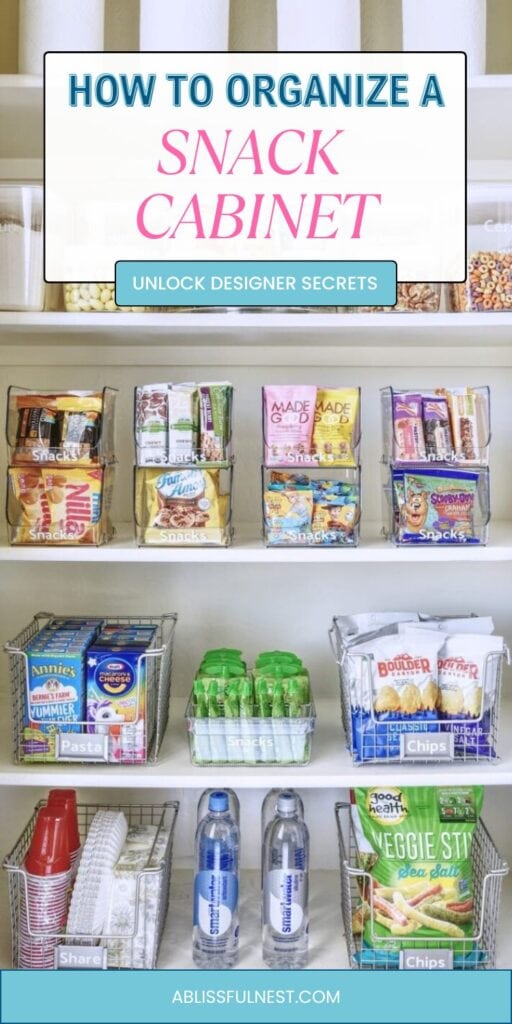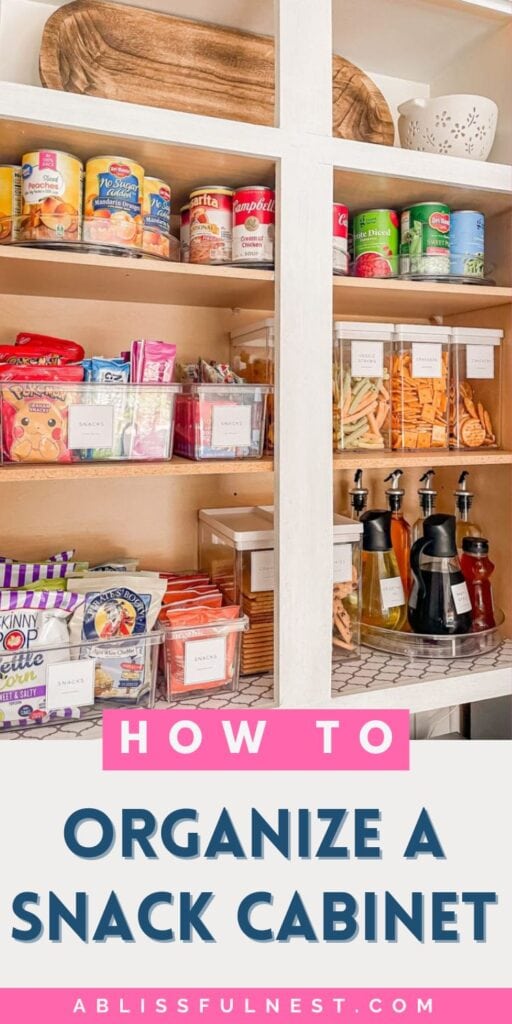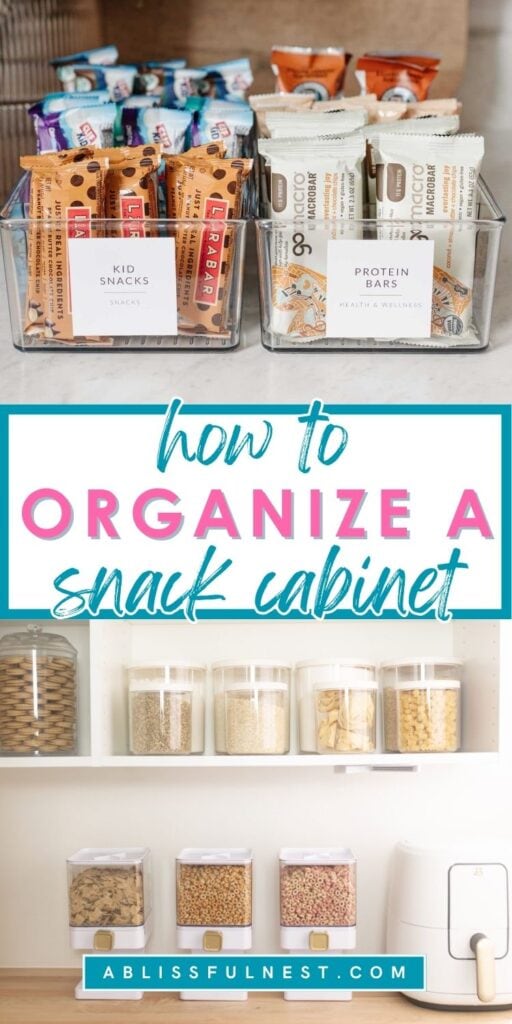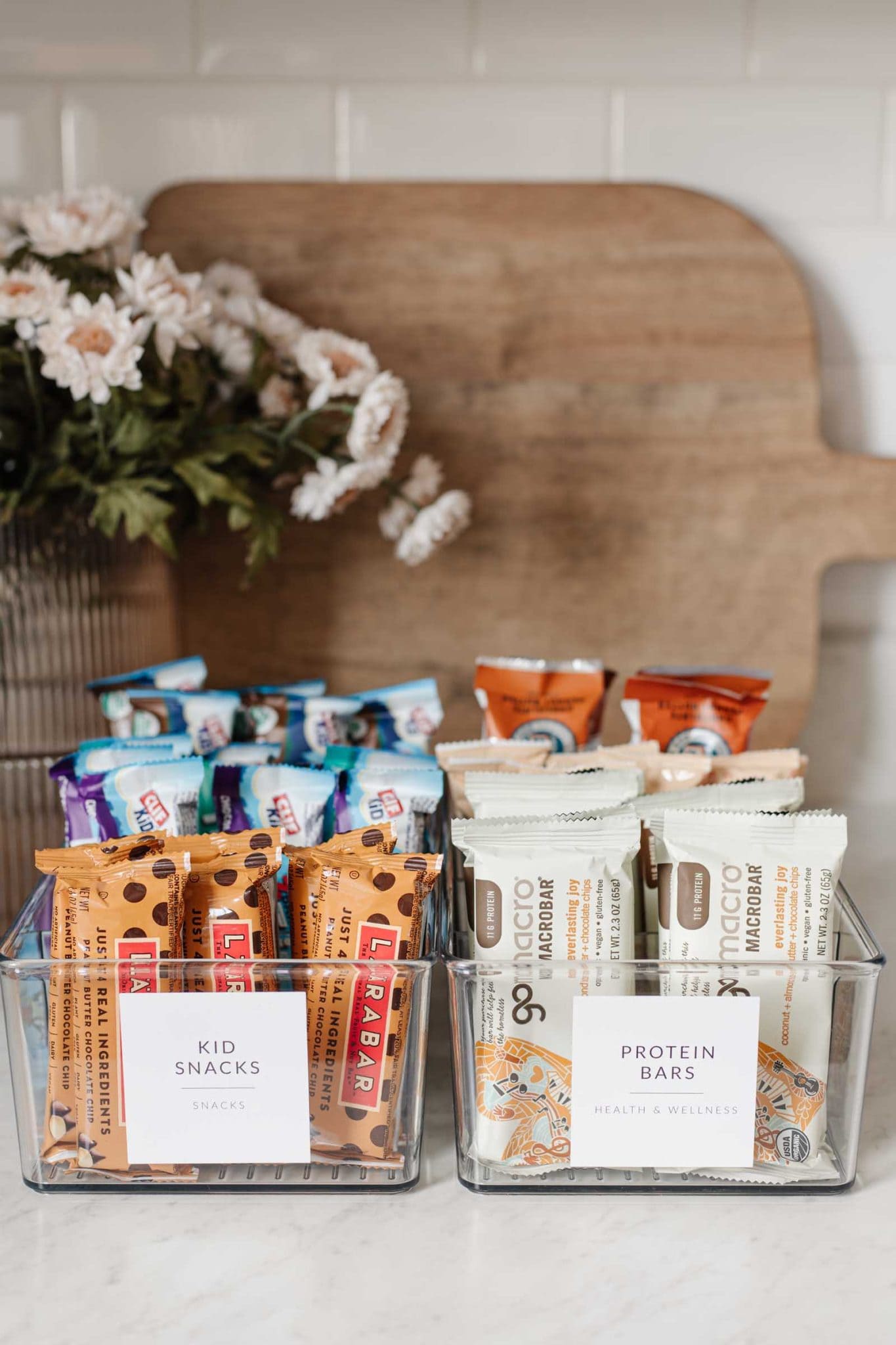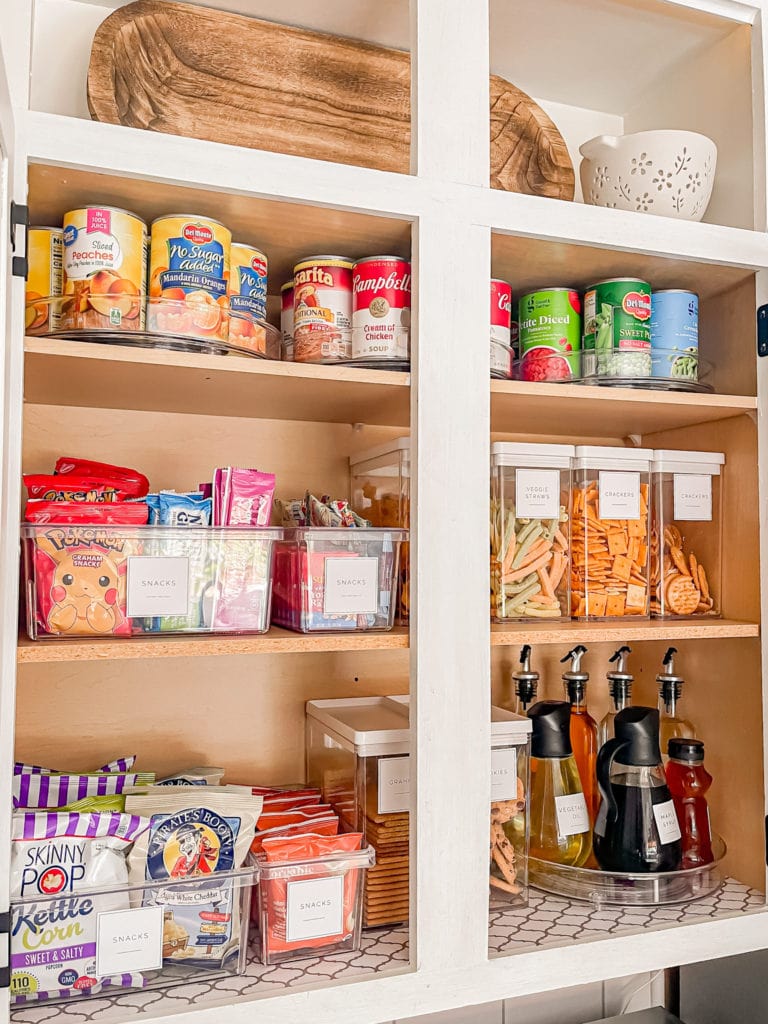Trying to figure out how to organize snack cabinet space can feel like a constant battle, especially with kids or multiple people in the house.
Most home organization ideas don’t take into account how quickly snacks disappear, multiply, or get tossed in without any order at all.
It’s frustrating when you open a cabinet and find crushed granola bars, half-open chip bags, and boxes that are already empty.
Even if you clean it out, snacks seem to pile back in randomly unless there’s a system that works for your daily routine.
Shallow shelves, awkward packaging, and different preferences only make it harder to keep things organized and accessible.
You might try bins or baskets, but if nothing’s labeled or grouped properly, the space becomes just another junk drawer with food inside.
Snack clutter can waste money too, especially when expired items get buried and you end up buying duplicates.
This post may contain affiliate links. As an Amazon Associate and a participant in other affiliate programs, I earn a commission on qualifying purchases at no additional cost to you.
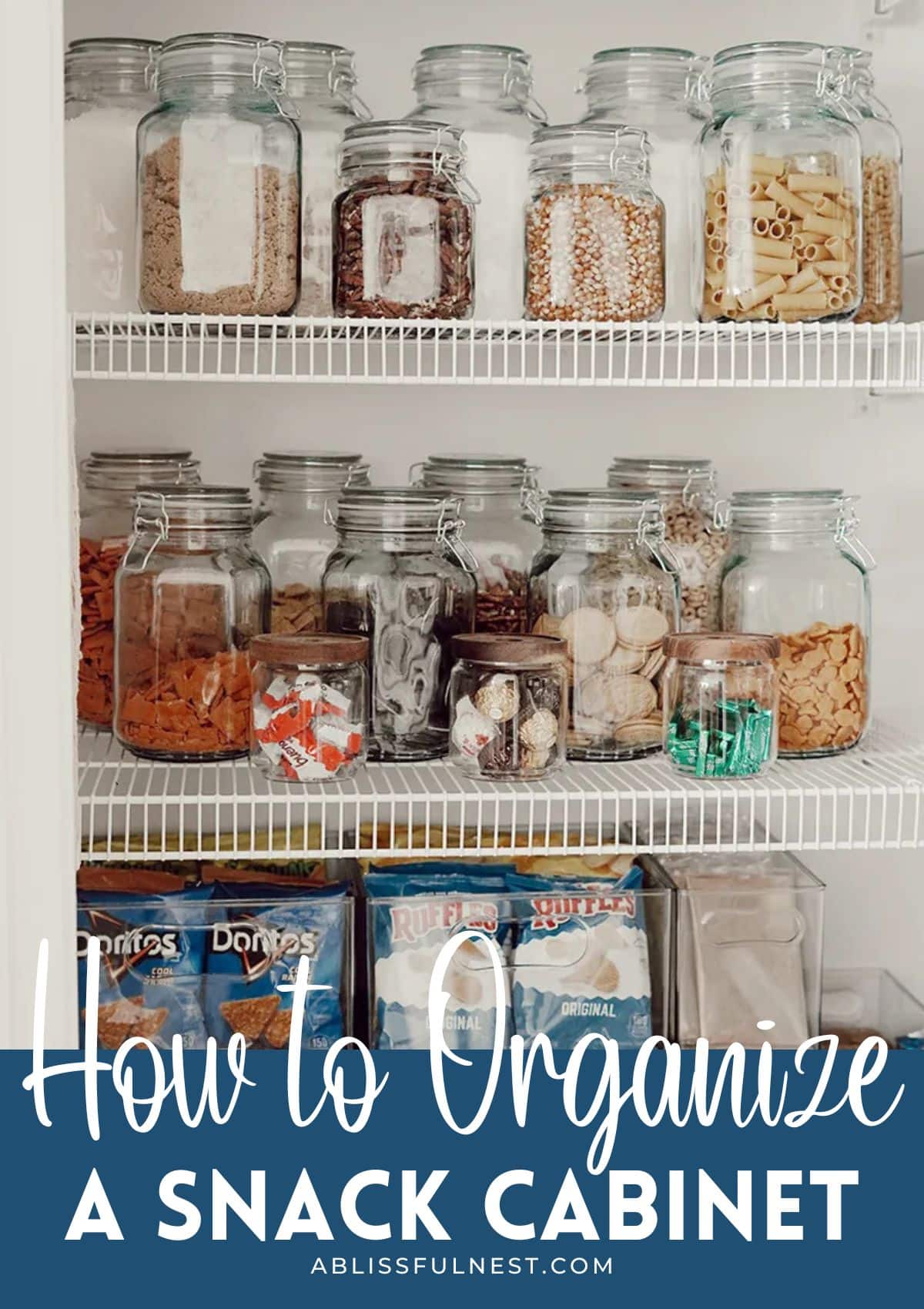
If you’re not keeping track of what you have, it’s easy to miss healthy options or forget treats you already bought.
Everyone wants a snack station that’s easy to manage, especially when mornings are rushed or kids pack their own lunches.
Once you figure out a setup that fits your space and lifestyle, organizing your snack cabinet actually feels doable and satisfying.
Why It’s Worth Organizing Your Snack Cabinet
A messy snack cabinet causes daily stress, especially when you’re reaching for something quick and only find crushed bags or empty boxes.
Disorganization leads to waste, whether that’s expired granola bars hiding in the back or buying snacks you already had but couldn’t find. This is one of those easy ways to declutter your home that instantly makes a difference.
If your kids grab snacks often, a clean setup helps them find what they need without leaving everything a mess afterward.
It’s also easier to manage portions and restock when you can actually see what’s running low at a glance.
When everyone knows where snacks go, there’s less arguing and fewer items left open and forgotten.
A well-organized cabinet saves time on busy mornings or late-night snack runs, especially when your family has different favorites.
Storing snacks by type or user makes it easier to grab and go, instead of digging through a crowded shelf.
Labeling bins is one of those brilliant kitchen organization hacks that helps reduce questions and keeps things consistent for whoever is packing lunch or doing grocery inventory.
Kitchen cabinet organizers can even help support healthier habits by making good choices more visible and easy to grab.
Once your snack shelf feels clear and orderly, the entire kitchen starts to function better for everyday routines.
More Home Organization Ideas + Inspiration
Snack Cabinet Organization Ideas For Small Spaces
Even small kitchens can have great snack storage if you use creative tricks that maximize space while keeping things easy to access.
Try these ideas to help keep your cabinet tidy without needing a full pantry or extra shelving.
- Tiered shelves – Use risers to create visible levels so nothing gets lost behind other items in a deep or crowded cabinet.
- Pull-out bins – Slide-out bins make it easy to see and reach snacks without digging or knocking things over each time.
- Clear canisters – Transparent airtight containers keep snacks fresh, organized, and easy to identify, especially for cereals, crackers, or pretzels.
- Over-the-door racks – These maximize vertical cabinet space by holding small snack bags or boxes that don’t fit well on shelves.
- Labelled baskets – Assign categories like sweet, salty, healthy, or lunchbox snacks so everyone finds what they need quickly and easily.
- Snack drawer dividers – Use dividers to keep individual packets upright and separated, so smaller items don’t slide around or pile up.
- Hooks or clips – Install clips inside cabinet doors to hang lightweight snack bags, keeping them visible and off the shelf surface.
- Rotating turntables – Turntables help you access everything with a quick spin, ideal for small snacks or sauces in tight spaces.
- Magazine holders – Store snack bars or pouches upright using a magazine file turned sideways for compact and visible snack storage.
- Lazy snack jars – Use large jars to collect unwrapped or bulk snacks like trail mix, popcorn, or single candies for quick grabbing.
What You Need To Organize A Snack Cabinet
Having the right organizing tools makes it easier to set up and stick to a system that keeps your snacks sorted and easy to grab.
These must-have items reflect smart organizing and decluttering tips, helping contain clutter and give everything a dedicated place, even in smaller or shared cabinet areas.
Tap Photos To Shop
Would you like to save this post?
Best Tips For Keeping Your Snack Cabinet Organized Long-Term
A clean snack cabinet doesn’t stay that way unless you have a few habits that help your system stick after the first setup.
With regular maintenance and a bit of structure, it’s possible to keep things organized without needing to start over every month.
- Do a seasonal cleanup – Check your cabinet for expired or forgotten snacks every season, then wipe shelves and reset bins to keep everything tidy and useful. This simple habit helps prevent clutter from piling up and makes your setup feel fresh and manageable throughout the year.
- Restock weekly – Add snacks to your grocery list every week so your bins stay full and your family doesn’t dig through half-empty shelves. Restocking regularly also helps you avoid buying duplicates and keeps your cabinet consistent without needing a full reset often.
- Wipe shelves monthly – Clean up crumbs, spills, and sticky messes at least once a month to keep your snack cabinet feeling fresh and pest-free. Even a quick wipe-down makes a difference and helps maintain a tidy, welcoming setup that everyone enjoys using.
- Rotate older snacks forward – Move older or half-used snacks to the front so they’re eaten first before anyone opens a brand-new package from the back. This cuts down on food waste and keeps your rotation simple and effective without needing to track expiration dates constantly.
- Limit packaging – Remove bulky boxes and store snack contents in clear bins or jars that save space and make items easier to see and grab. Less packaging keeps your cabinet neat, improves visibility, and helps kids or guests spot what they want without tearing through everything.
- Use labels everyone understands – Label each bin clearly with simple terms like “chips,” “treats,” or “lunch snacks” so everyone knows what goes where. Labels save time, reduce confusion, and help others follow the system without constant reminders or extra effort.
- Store kid-friendly snacks low – Place child-approved snacks on a lower shelf so kids can help themselves without pulling down taller bins or needing assistance. This keeps the cabinet neater and gives kids a little independence without creating spills or unnecessary messes.
- Group by category – Sort snacks into categories like salty, sweet, protein, or grab-and-go so it’s faster to find what you need. Grouping helps you track inventory better and makes the cabinet easier to restock based on what gets eaten the most. It also aligns well with your overall kitchen decluttering checklist, keeping your space intentional and under control.
- Add a snack basket for guests – Keep one basket labeled for visitors so they know what they’re welcome to enjoy without rummaging through the family stash. It adds a nice touch for hosting and helps protect your regular snacks from disappearing too quickly.
- Track what gets eaten – Watch which snacks run out quickly and which ones stick around too long so you can plan better shopping trips. Tracking helps you budget smarter and keeps your snack cabinet full of favorites instead of forgotten or unwanted options.
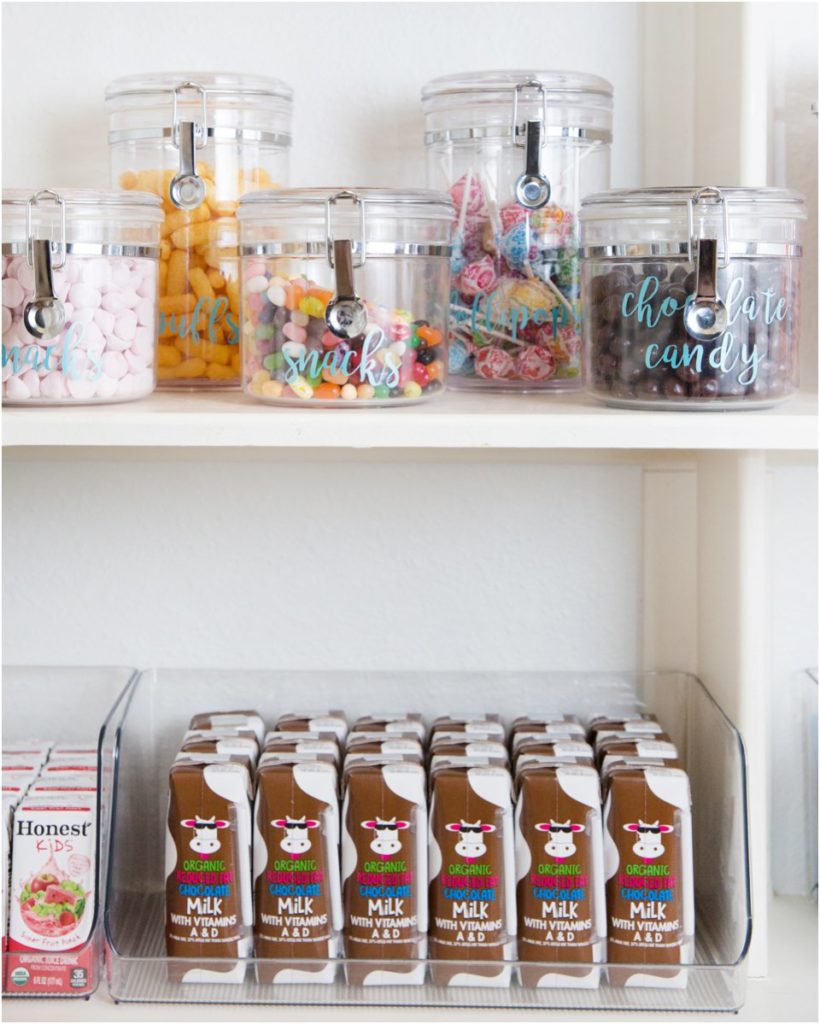
How To Organize A Snack Cabinet
Now that you know what works and what you need, setting up your snack cabinet can be quick and practical with just a few steps.
Here’s a step-by-step guide that makes your cabinet easier to use every day and more pleasant to open when you’re hungry.
Step 1: Clear Everything Out
Start by removing all snacks from the cabinet so you can clean surfaces and get a fresh view of the entire space. Wipe down shelves with a damp cloth to remove crumbs, sticky residue, or old packaging bits that may have collected. An empty cabinet helps you reset your system and make smarter decisions about what truly belongs in your snack area.
Step 2: Check Dates and Quality
Go through each snack item and toss anything stale, expired, or broken beyond saving so you’re not wasting valuable storage space. Make a quick list of items your family eats often so you can plan better for restocking and avoid running out unexpectedly. This helps prevent clutter from building back up and keeps only useful, fresh snacks in your cabinet.
Step 3: Group Snacks by Type or User
Sort your snacks into clear categories like salty, sweet, healthy, or lunch-friendly to make everything easier to grab when needed. You can also organize by person if each family member has specific favorites or dietary needs that require separate storage areas. Grouping makes your cabinet look tidier and supports quicker restocking and easier decision-making at snack time.
Step 4: Choose the Best Containers for Your Space
Select containers that match your cabinet size and layout so items fit neatly without being shoved into tight or uneven corners. Use clear bins, shallow drawers, or jars that make snacks easy to see and prevent overbuying or forgetting what you already have. Proper containers help your system stay functional instead of falling apart after one busy week of snacking.
Step 5: Label Clearly
Use printed or handwritten labels on each bin or jar so everyone knows what belongs where, even during busy mornings. Labels help keep your categories intact and reduce the time spent searching for a specific item or figuring out where something goes. This makes it easier for kids or guests to follow the system and put things back correctly.
Step 6: Arrange From Front to Back
Put your most-used snacks in the front row for easy grabbing, and place bulk or backup items farther back on the shelf. This keeps your daily snacks accessible while encouraging rotation of older stock to reduce waste and forgotten food. A front-to-back layout also helps you track which items need restocking more often than others.
Step 7: Add a Snack Bin for Extras
Use a small basket to hold open bags or extra pieces that no longer have their original packaging. This prevents clutter and encourages your household to finish half-used items before opening new ones from the shelf. It’s a simple way to reduce waste while keeping your cabinet looking tidy and intentional.
Step 8: Tidy Weekly
Spend a few minutes each week checking snack levels, wiping off crumbs, and moving older items forward to stay on top of clutter. A regular reset prevents the space from becoming unmanageable and helps your organization’s system stay useful longer. This quick habit keeps your cabinet clean, functional, and enjoyable to use every day.
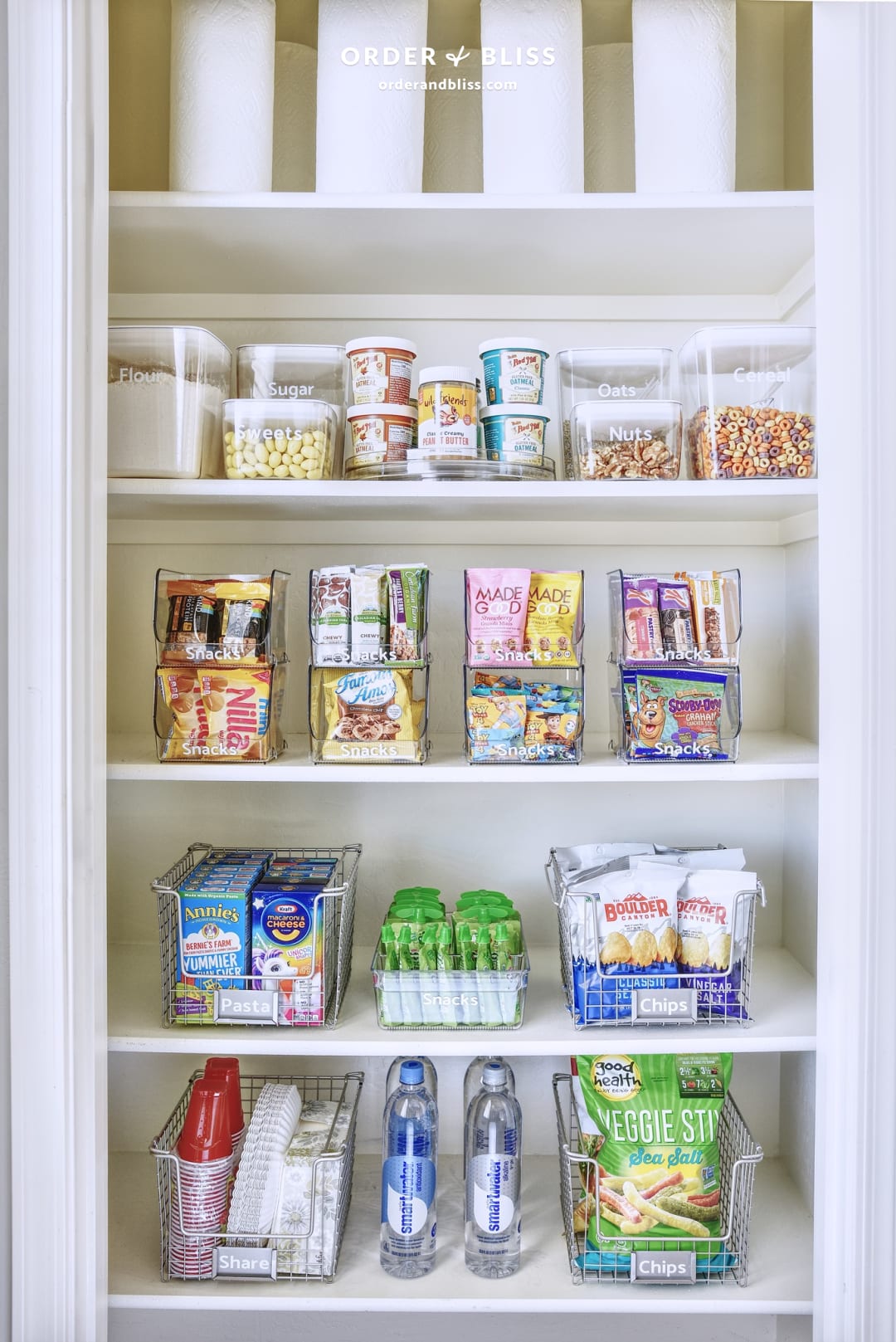
Frequently Asked Questions
Group snacks by category and use labeled containers to make items easy to grab, restock, and keep visible every day. Use bins, risers, or turntables to create layers and prevent clutter so nothing gets buried or lost in the back.
Place kid-friendly snacks on lower shelves and use clear bins so children can access them safely without making a mess. Label containers with simple words or pictures to help kids follow the system and return snacks to the right place easily.
Clear plastic bins with handles or stackable drawers help keep snacks neat, visible, and easy to reach during busy times. Airtight jars work well for loose items like crackers or cereal, keeping them fresh and reducing bulky packaging waste.
Wipe shelves monthly, toss expired items regularly, and restock weekly so the cabinet stays fresh, clean, and fully functional. Create a routine to rotate older snacks forward and update labels if needed, so everything stays in its proper place.
Use vertical space with risers, door racks, or shelf stackers to create multiple layers without wasting depth or height. Remove bulky packaging, store snacks in slim containers, and group items by size or category to make the most of space.
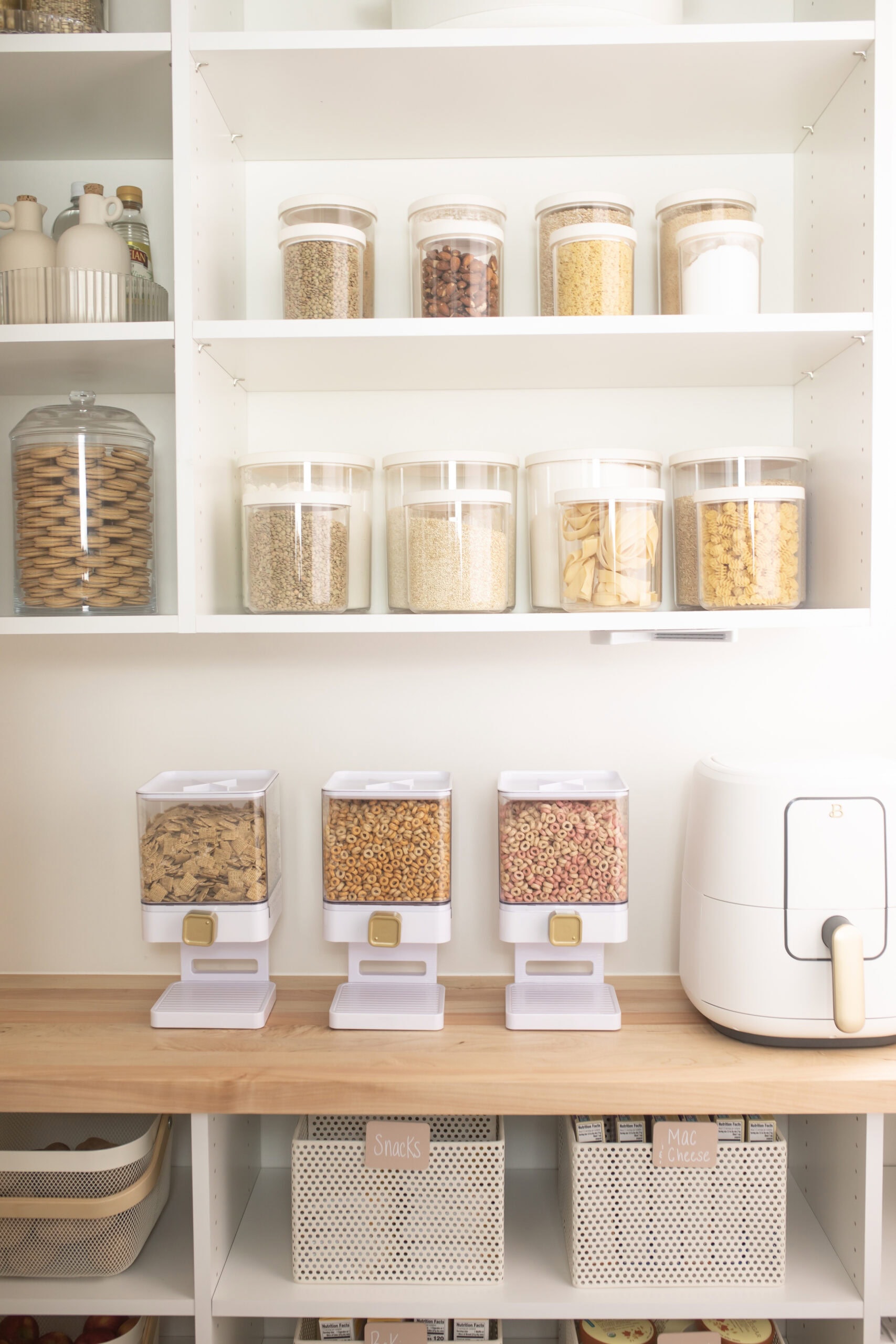
Cluttered cabinets full of mixed snacks can make even the simplest task feel like a headache during busy mornings or after-school hunger rushes.
Learning how to organize snack cabinet space helps you simplify your kitchen and cut down on food waste and last-minute shopping trips.
With the right tools, clear categories, and a few habits, snack storage can finally feel clean, easy, and ready for real life.
The best organizational system is one that you and your family can actually maintain week after week.
Once your snack shelf works for your routine, it becomes a small but powerful way to keep your home running more smoothly.


